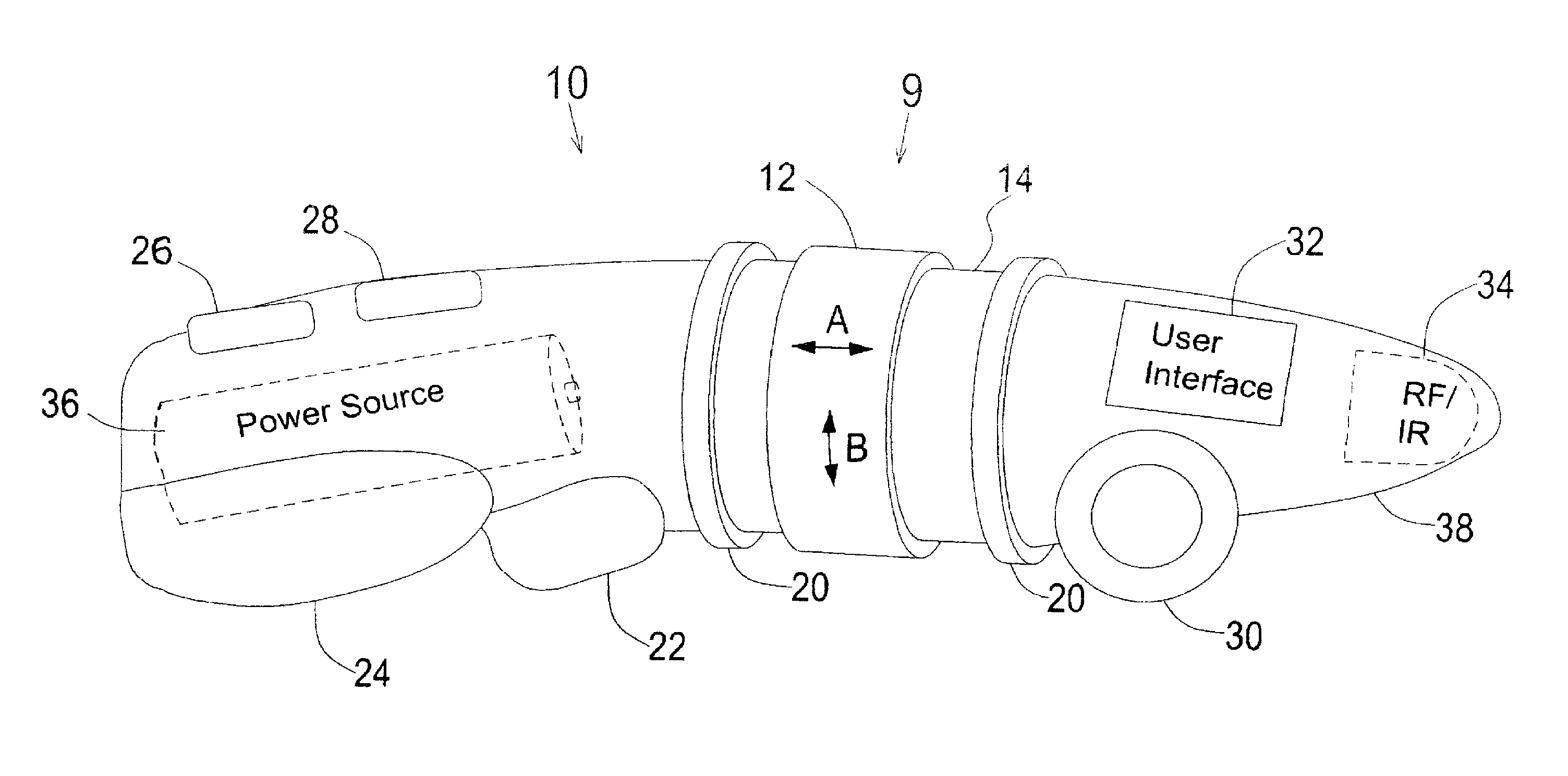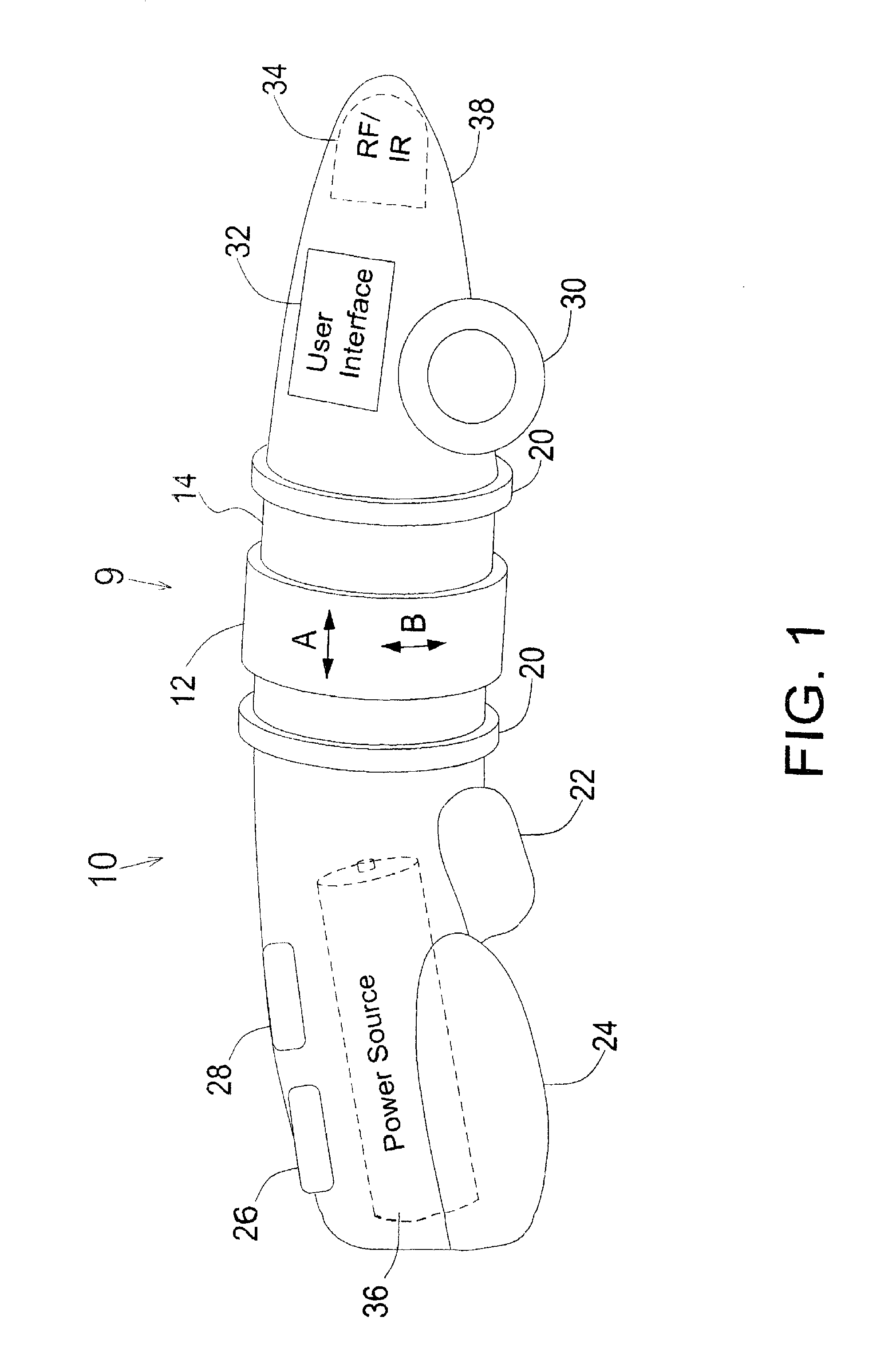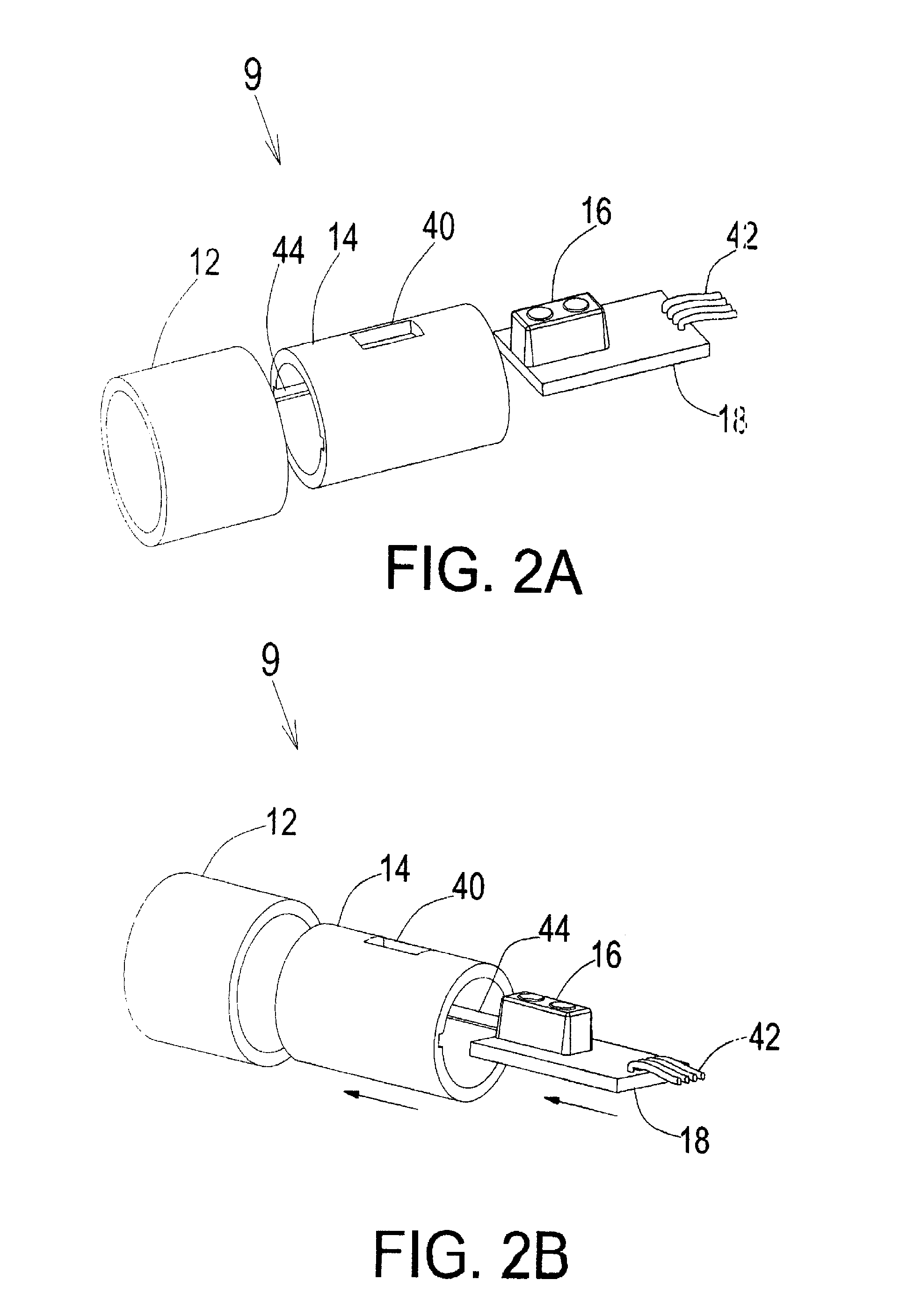Ergonomic control unit for providing a pointing function
a pointing function and ergonomic control technology, applied in the direction of instruments, cathode-ray tube indicators, electric digital data processing, etc., can solve the problems of unsuitable broad control functions, unsuitable for many applications, unsuitable for flat operation, etc., to achieve fine control of the cursor on the screen, easy manipulation, and quick motion of the cursor
- Summary
- Abstract
- Description
- Claims
- Application Information
AI Technical Summary
Benefits of technology
Problems solved by technology
Method used
Image
Examples
Embodiment Construction
[0057]Referring now to FIG. 1, there is shown a general view of an exemplary embodiment of the present invention incorporated within a pointing device.
[0058]The hand-held, remote-control pointing device 10 incorporates a control unit 9, comprising a ring element 12 which is rotatable (arrow B) and slidable (arrow A) about a stationary cylindrical tube 14 anchored within the body 38 of pointing device 10. There is provided at least one, internally mounted, optical sensor 16 (see FIGS. 2A / 2B for details). Two pressure sensors 20 are disposed, one at each limit of the sliding motion (indicated by arrow A) of ring element 12. Optionally, ring element 12 has an indentation formed in its outer surface to accommodate a human thumb or any other finger that is capable of manipulating it to rotate or slide.
[0059]Each pressure sensor 20 limits the axial movement of ring element 12 along the axis of device 10 in either direction (as shown by arrow A). These pressure sensors 20 provide control f...
PUM
 Login to View More
Login to View More Abstract
Description
Claims
Application Information
 Login to View More
Login to View More - R&D
- Intellectual Property
- Life Sciences
- Materials
- Tech Scout
- Unparalleled Data Quality
- Higher Quality Content
- 60% Fewer Hallucinations
Browse by: Latest US Patents, China's latest patents, Technical Efficacy Thesaurus, Application Domain, Technology Topic, Popular Technical Reports.
© 2025 PatSnap. All rights reserved.Legal|Privacy policy|Modern Slavery Act Transparency Statement|Sitemap|About US| Contact US: help@patsnap.com



